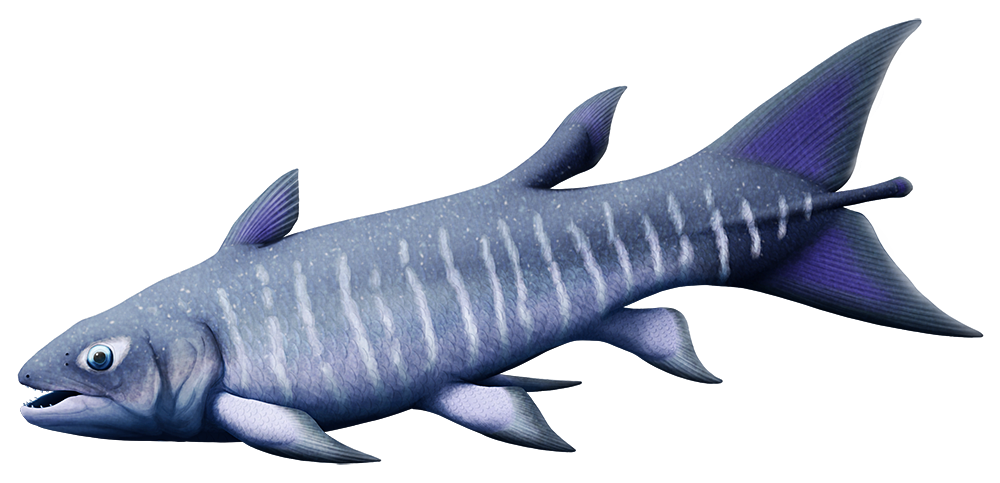Coelacanths are famous for being “living fossils”, completely disappearing from the fossil record at the end of the Cretaceous but then being rediscovered alive just 80 years ago. But although they’re often thought to have physically changed very little over the last 300 million years or so, more recent discoveries are starting to show that coelacanth body forms and lifestyles were actually more varied in the distant past.
Meet the wonderfully-named Rebellatrix divaricerca, from the Early Triassic of British Columbia, Canada (~251-247 mya). Measuring around 1.3m long (4′3″), its body shape and large symmetrical forked tail suggest it was adapted for fast swimming. Unlike its slow-moving deep-water modern relatives this coelacanth was a speedy oceanic active predator, convergently similar to tuna or some sharks.
Since it lived in the immediate wake of the end-Permian “Great Dying” mass extinction, Rebellatrix may have rapidly evolved from more standard-looking coelacanths to take advantage of a suddenly vacant ecological niche – or it might be part of a more extensive unusual lineage whose other members simply haven’t been discovered yet.

